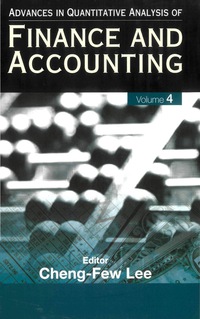19) 19) In May of 2018, Raymond Financial Services became involved in a penalty dispute with the EPA. At December 31, 2018, the environmental attorney for Raymond indicated that an unfavorable outcome to the dispute was probable. The additional penalties were estimated to be 5770.000 but could be as high as $1.170.000. After the year-end, but before the 2018 financial statements were issued, Raymond accepted an EPA settlement ofler of $900.000. Raymond should have reported an accrued liability on its December 31, 2018, balance sheet of: A) 5770,000. B) $1,170,000. ) S970,000. D) S900,000 20) Short-term obligations can be reported as long-term liabilities if: A) The firm has a long-term line of credit B) The firm intends to and has the ability to refinance as long-term C) The firm has the ability to refinance on a long-term basis. D) The firm has tentative plans to issue long-term bonds. 21) 21) of the following, which typically would not be classified as a current liability A) Rent revenue received in advance. B) Estimated liability from cash rebate program. C) A six-month bank loan to be paid with the proceeds from the sale of common sack D) A long-term note payable maturing within the coming year. 22) 22) Kline Company refinanced current debt as long-term debt on January 5, 2019. Kline's fiscal year ended on December 31, 2018, and its financial statements will be issued sometime in early March 2019. Under IFRS, how would Kline classify the debt on its December 31, 2018, balance sheet? A) in the "mezzanine" between current and noncurrent liabilities. B) As a current liability. C) Kline would not classify the debt as current or noncurrent, but rather would write a disclosure note explaining the circumstances D) As a noncurrent liability, 23) 23) Branch Company, a building materials supplier, has $18,000,000 of notes payable due April 12, 2019. At December 31, 2018, Branch signed an agreement with First Bank to borrow up to $18,000,000 to refinance the notes on a long-term basis. The agreement specified that borrowings would not exceed 75% of the value of the collateral that Branch provided. At the date of issue of the December 31, 2018, financial statements, the value of Branch's collateral was $20,000,000. On its December 31, 2018, balance sheet, Branch should classify the notes as follows A) $18,000,000 of long-term liabilities. B) $18,000,000 of current liabilities C) $4.500,000 short-term and $13,500,000 current liabilities D) $15,000,000 long-term and $3,000,000 current liabilities 24) 24) Gain contingencies usually are recognized in a company's income statement when: A) The gain is reasonably possible and the amount can be reasonable estimated. B) The gain is probable and the amount can be reasonably estimated. C) Realized. D) The amount can be reasonably estimated. 25) Gray Co, estimates it is probable that it will receive a $10,000 gain contingency and pay 25)_ a $4,000 loss contingency. After recording the appropriate journal entries to recognize contingent amounts, Gray Co.'s net assets will: A) Increase by $10,000. B) Decrease by $4,000. C) Increase by $6,000. D) Not change. 26) 26) A company should accrue a loss contingency only if the likelihood that a liability has been incurred is: A) Probable and the amount of the loss can be reasonably estimated. B) At least reasonably possible and the amount of the loss is known. C) More likely than not and the amount of the loss is known. D) At least reasonably possible and the amount of the loss can be reasonably estimated. 27) 27) A loss contingency should be accrued in a company's financial statements only if the likelihood that a liability has been incurred is: A) Reasonably possible and the amount of the loss can be reasonably estimated. B) Probable and the amount of the loss can be reasonably estimated. C) Reasonably possible and the amount of the loss is known. D) At least remotely possible and the amount of the loss is known








